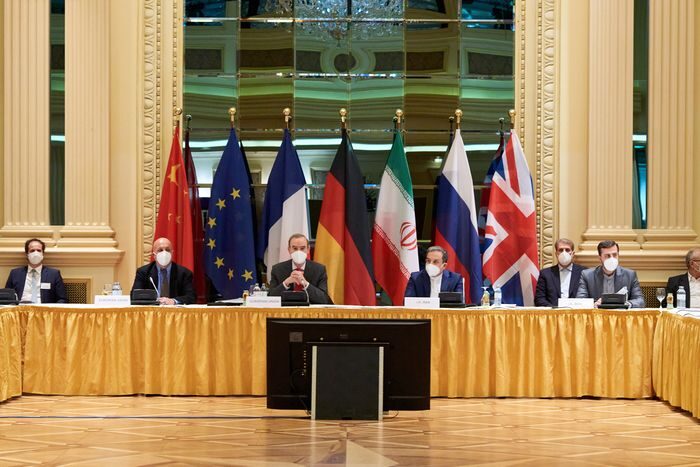
On Wednesday, State Department spokesperson Ned Price told reporters that the U.S. is prepared to "take the steps necessary to return to compliance" with the deal, known formally as the Joint Comprehensive Plan of Action. Though Price said he is "not in a position here to give you chapter and verse on what those might be," those measures will include "lifting sanctions that are inconsistent with" the stipulations of the Iran Deal secured by Barack Obama.
In Vienna this week, all the signatories of the deal — Iran, the U.S., China, Russia, France, Germany, and the United Kingdom — developed two working groups to figure out how to revoke the economic sanctions Trump reimposed after he left the accord in 2018 and to determine how to bring Iran back into compliance with the agreement's limits on nuclear enrichment and stockpiled enriched uranium.
President Biden has vowed to restore the deal — a key achievement of the Obama administration's foreign-policy legacy — which would involve negating some 1,600 sanctions imposed on Iran. In 2019, close to a year after Trump reimposed the sanctions, the theocratic nation began to break the nuclear-enrichment limits established in the deal. By 2020, tensions between the two nations soared when the U.S. assassinated Iranian general Qasem Soleimani.
While the plan to return to compliance marks a significant step toward more normal diplomatic relations between the U.S. and Iran, both countries are approaching the process with some hesitancy. State Department leaders want Tehran to adhere to the agreed enrichment levels before the U.S. lifts sanctions, while Iranian officials, burned just three years prior, want the U.S. to make the first move.



Comment: See also: